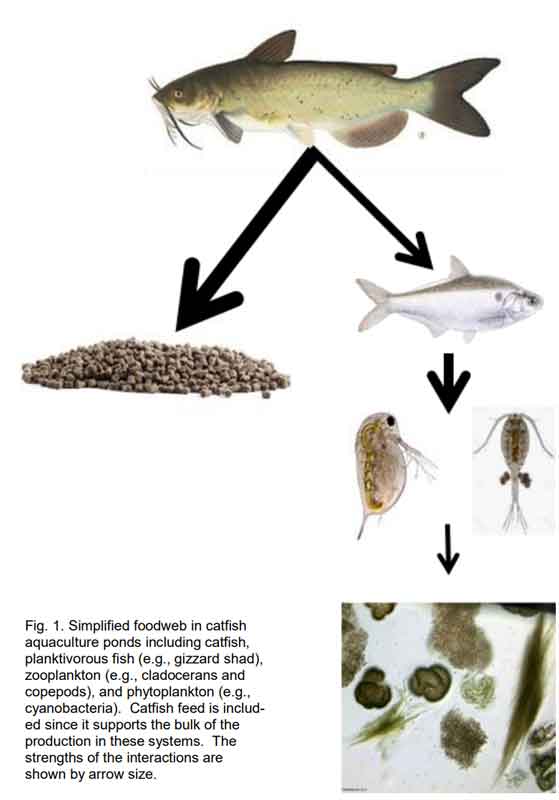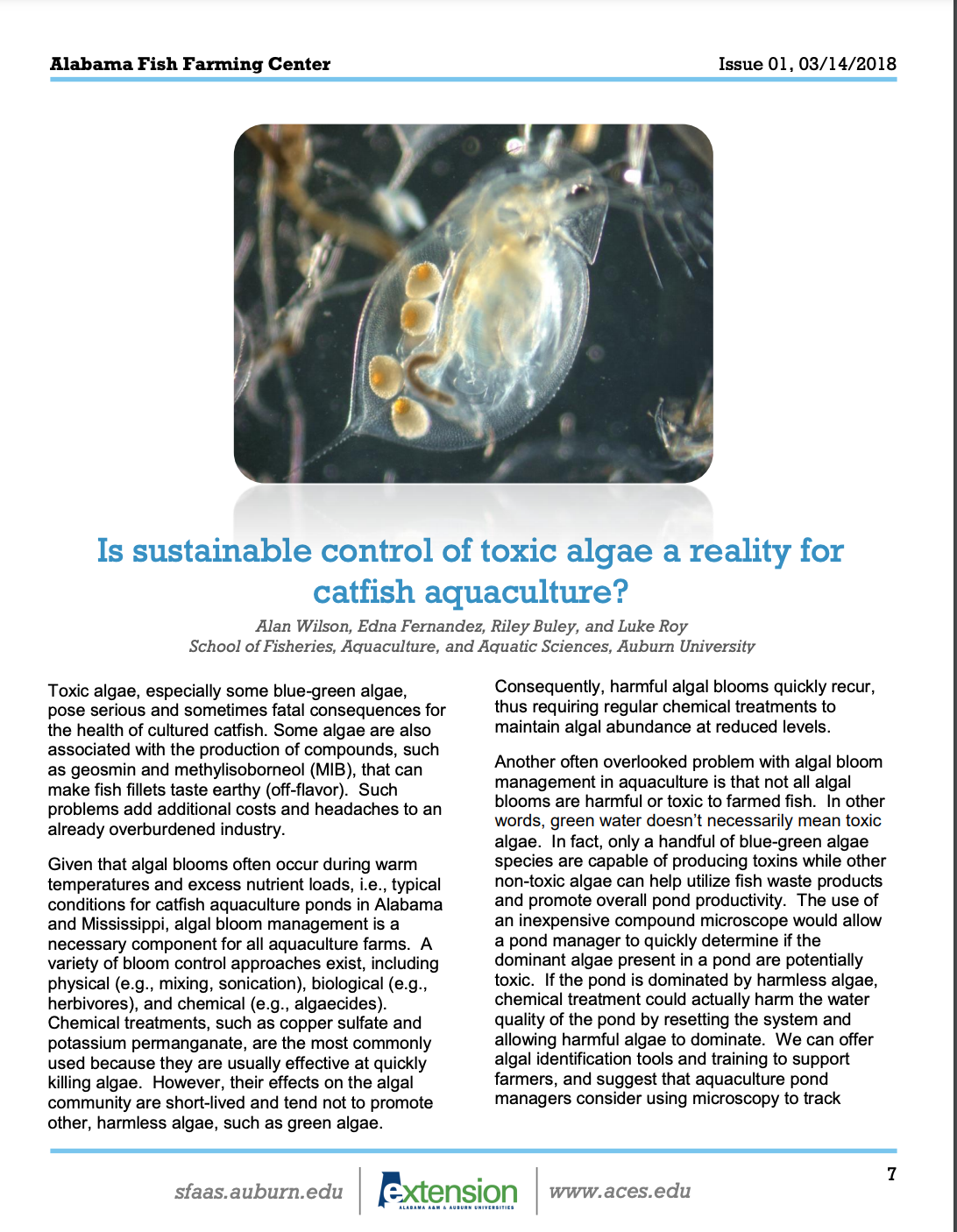Keyword: Catfish

Belfiore, A. and A. E. Wilson. 2020. Improving catfish pond water quality by reducing planktivorous fish abundance. Fish Farming News 2020(1):8-10.
Abstract
In highly productive aquaculture ponds, conditions for phytoplankton blooms are intensified. The presence of increased nutrient availability, shallow waters with regular mixing through aeration, warm temperatures, and high intensity sunlight common in these settings often leads to dense blooms of phytoplankton throughout most of year. However, cyanobacteria (also commonly called, blue-green algae) often dominate the phytoplankton community during the growing season (May-October) and can negatively affect aquaculture production through the release of off-flavor compounds, such as geosmin and 2-methylisoborneol (MIB), and toxins, such as the liver toxin microcystin and/or neurotoxin saxitoxin. In extreme cases, phytoplankton blooms can promote hypoxic conditions when they degrade and lead to fish kills that can devastate producers’ livelihood. Catfish aquaculture ponds may include catfish of mixed sizes due to incomplete harvesting as well as intentionally or unintentionally introduced planktivorous fish, such as threadfin shad, gizzard shad, bluegill, green sunfish, and/or fathead minnows. Reports suggest that some planktivorous fish eat and possibly control phytoplankton, although there is a long history of research that shows that these fish eat zooplankton (small animals that consume phytoplanktrophic cascade). When one level of the ecosystem has been altered, it will directly and indirectly affect the rest of the system.

Wilson, A. E., E. G. Fernandez, R. Buley, and L. A. Roy. 2018. Is sustainable control of toxic algae a reality for catfish aquaculture? Fish Farming News 2018(1):7-8.
Abstract
Toxic algae, especially some blue-green algae, pose serious and sometimes fatal consequences for the health of cultured catfish. Some algae are also associated with the production of compounds, such as geosmin and methylisoborneol (MIB), that can make fish fillets taste earthy (off-flavor). Such problems add additional costs and headaches to an already overburdened industry.
Given that algal blooms often occur during warm temperatures and excess nutrient loads, i.e., typical conditions for catfish aquaculture ponds in Alabama and Mississippi, algal bloom management is a necessary component for all aquaculture farms. A variety of bloom control approaches exist, including physical (e.g., mixing, sonication), biological (e.g., herbivores), and chemical (e.g., algaecides). Chemical treatments, such as copper sulfate and potassium permanganate, are the most commonly used because they are usually effective at quickly killing algae. However, their effects on the algal community are short-lived and tend not to promote other, harmless algae, such as green algae.